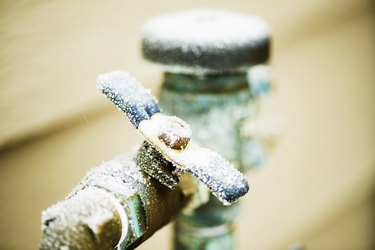How to Protect Pipes from Cold Weather Issues: Essential Tips
How to Protect Pipes from Cold Weather Issues: Essential Tips
Blog Article
How do you actually feel in regards to Helpful Tips to Prevent Frozen Pipes this Winter?

Winter can wreak havoc on your pipes, particularly by freezing pipes. Here's how to avoid it from happening and what to do if it does.
Introduction
As temperatures decrease, the risk of icy pipes boosts, possibly leading to costly repair services and water damages. Understanding just how to avoid frozen pipelines is important for home owners in cool environments.
Avoidance Tips
Shielding prone pipelines
Wrap pipelines in insulation sleeves or make use of heat tape to secure them from freezing temperature levels. Concentrate on pipelines in unheated or outside areas of the home.
Heating strategies
Keep interior areas appropriately warmed, especially locations with plumbing. Open cabinet doors to permit warm air to flow around pipelines under sinks.
Just how to recognize frozen pipes
Try to find decreased water flow from taps, uncommon smells or sounds from pipes, and visible frost on revealed pipelines.
Long-Term Solutions
Architectural changes
Take into consideration rerouting pipes away from outside wall surfaces or unheated areas. Add extra insulation to attic rooms, cellars, and crawl spaces.
Upgrading insulation
Invest in premium insulation for pipes, attics, and wall surfaces. Proper insulation helps maintain constant temperature levels and lowers the threat of icy pipes.
Shielding Outside Pipes
Yard hoses and outdoor taps
Disconnect and drain pipes garden hose pipes prior to winter. Set up frost-proof spigots or cover outside faucets with insulated caps.
Understanding Frozen Pipes
What causes pipelines to ice up?
Pipes freeze when exposed to temperatures listed below 32 ° F (0 ° C) for expanded periods. As water inside the pipes freezes, it increases, putting pressure on the pipeline walls and potentially causing them to break.
Threats and problems
Frozen pipelines can cause water disturbances, home damage, and costly repair work. Ruptured pipes can flood homes and trigger comprehensive structural damages.
Signs of Frozen Piping
Identifying icy pipes early can avoid them from rupturing.
What to Do If Your Pipelines Freeze
Immediate actions to take
If you suspect frozen pipes, maintain taps open to alleviate pressure as the ice thaws. Utilize a hairdryer or towels taken in hot water to thaw pipelines slowly.
Final thought
Avoiding frozen pipelines needs proactive procedures and quick feedbacks. By recognizing the causes, signs, and preventive measures, property owners can secure their plumbing during cold weather.
6 Proven Ways to Prevent Frozen Pipes and Protect Your Home
Disconnect and Drain Garden Hoses
Before winter arrives, start by disconnecting your garden hoses and draining any remaining water. Close the shut-off valves that supply outdoor hose bibs and leave the outdoor faucet open to allow any residual water to drain. For extra protection, consider using faucet covers throughout the colder months. It’s also important to drain water from any sprinkler supply lines following the manufacturer’s directions.
Insulate Exposed Pipes
Insulating your pipes is an effective way to prevent freezing. Pipe insulation is readily available at home improvement stores and is relatively inexpensive. Pay close attention to pipes in unheated areas such as the attic, basement, crawl spaces, or garage. Apply foam insulation generously to create a buffer against the cold. You can also wrap your pipes in heat tape or thermostat-controlled heat cables for added warmth.
Seal Air Leaks
Inspect your home for any cracks or openings that could let in cold air. Seal any holes around the piping in interior or exterior walls, as well as the sill plates where your home rests on its foundation. Additionally, make sure to keep your garage door closed unless you’re entering or exiting. Leaving it open creates a significant air leak that can lead to frozen pipes.
Allow Warm Air Circulation
During cold snaps, it’s essential to allow warm air to circulate evenly throughout your home. Leave interior doors ajar to promote better airflow. Open kitchen and bathroom cabinets to help distribute heat consistently around the rooms. If you have small children or pets, be sure to remove any household chemicals or potentially harmful cleaners from open cabinets for safety.
Let Faucets Drip
A small trickle of water can make a big difference in preventing ice formation inside your pipes. When temperatures drop significantly, start a drip of water from all faucets served by exposed pipes. This continuous flow helps prevent the water from freezing. Additionally, running a few faucets slightly can relieve pressure inside the pipes, reducing the chances of a rupture if the water inside does freeze.
https://choateshvac.com/6-proven-ways-to-prevent-frozen-pipes-and-protect-your-home/

As a fervent reader about How To Avoid Freezing Pipes, I figured sharing that article was a good thing. Loved our post? Please share it. Let somebody else locate it. Thanks for taking the time to read it.
Click Here! Report this page